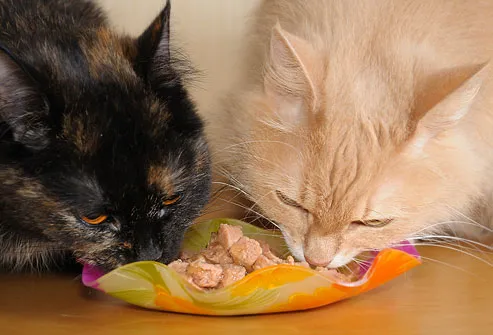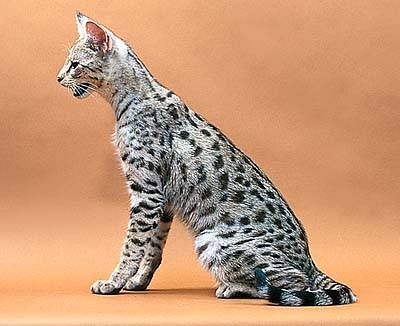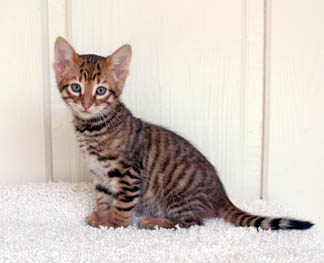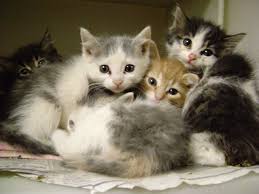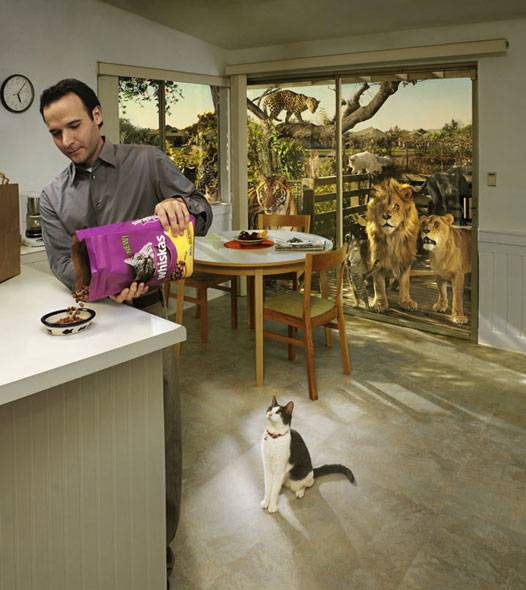 Norwegian Forest Cat
Norwegian Forest CatCreative people tend to be more emotional and treasure close relationships, rather than having a lot of friends. Type B personalities do well with social, yet quiet cats. Top cat breeds for this personality are: Bengals, Tiffany, Scottish Fold, Persian, American Curl, Turkish Angora, and the
Norwegian Forest Cat. The Norwegian Forest Cat is another long haired breed known for its size. These winter-loving, independent and robust cats will reach up to 22 pounds and are believed to be ancestors of the popular American Maine Coon.
Breeds such as the Maine Coon, Norwegian Forest Cat, and the two Turks are purebreds, meaning that little to no infusion of other breeds has taken place over the years. These breeds are uniquely their own and in addition to their unique characters and conformation, offer owners a long and interesting history to investigate. The investigation will then become a nice pastime for the Norwegian Forest Cat owner to page through ancient Norse fables in search of references to his cat's breed.

Thinking back the Vikings, the Norwegian Forest cat is an old variety. This type of reference to cats in the Norse mythology and Norwegian fairy tales, but his breeding true origins are unknown. Domestic breeding Norwegian Forest cat, because 'skogkatt well known in Scandinavia, the farmers began in 1930, but it is not recognized as a species, until the 20th century, 70's, when the' Wegies' (derived from the word Norwegian breeding nickname ') became popular.
Norwegian Forest Cats lived in a cold, bad weather, most of the year, so their coat is to adapt to this environment. This is a long, thick winter protection from the hash and they are almost waterproof. They got in spring, summer coat, shedding, the results need to be attended to. Some people say that there is no need dress, Norwegian Forest cat fight off the regular modification is a useful tool, but they are far less than other long-haired shed. They need regular brushing to help deal with tangles and matting, may need a bath, if they are too greasy (oil is what makes the waterproof coating.) Their clothes in many colors and patterns.

Adult male Norwegian Forest cat will reach an average weight twenty-two pounds thirteen and women will be about half the size. They will live in anywhere from fifteen to twenty years. Norwegian Forest Cats are very smart, kind, patient, and their children make good family pets. They are also friendly and gentle, so they get with other family pets get along well. This species like mountain climbing, so the cat apartment is a must.
If the Norwegian Forest cat is not allowed to climb on a regular basis, he may become restless or bored, which can result in destructive behavior to alleviate boredom. A Norwegian Forest cat meow is described as not one, but sang a soft melody. This is a hearty breed, although some may have glycogen storage disease.

Beauty, intelligence, great social skills, can be found as living in a "perfect pet" as a few to Norwegian Forest Cat. In the cold Nordic climate of origin, spread out the long-haired companion hunters in Europe and North America, pirate adventure.
Physically, Norwegian Forest cat has a long guard hairs and thick double fur down. Accompanied by the ears, long hairs between the toes, they also have a thick mane around the neck like a scarf. Tail very long, very fluffy. As for color, in Skogkatt, its native name, in addition to involving almost every point of the common seal or chocolate Persian and Siamese cats. They range from plain white or marked by tabby and black marble pattern. The expression of the head is triangular copper and gold from the green eyes friendly.

This highly intelligent cat, under normal circumstances is very friendly, so a small children's home a good pet. It is like the outdoor and an indoor climbing which is why most cats will be happy to give a high degree of local access and habitat. This cat is great. Men can easily grow sixteen to twenty-two pounds and females only slightly smaller. Hind legs longer than the forelimbs. Norwegian Forest Cats are very curious, and its people should expect it to stick around the nose.

Despite the thick fur, Norwegian Forest cat does not need to keep training. A once a week, brush your teeth, only the increase in the spring molting, will help to make them smooth. They are very soft, silky touch. Clear coat in the summer is to give the cat a very different seasons throughout the year to see the short. This species is generally very strong, although they also have a pair of polycystic kidney disease, renal failure caused by trends.
 Norwegian Forest Cat
Norwegian Forest Cat






